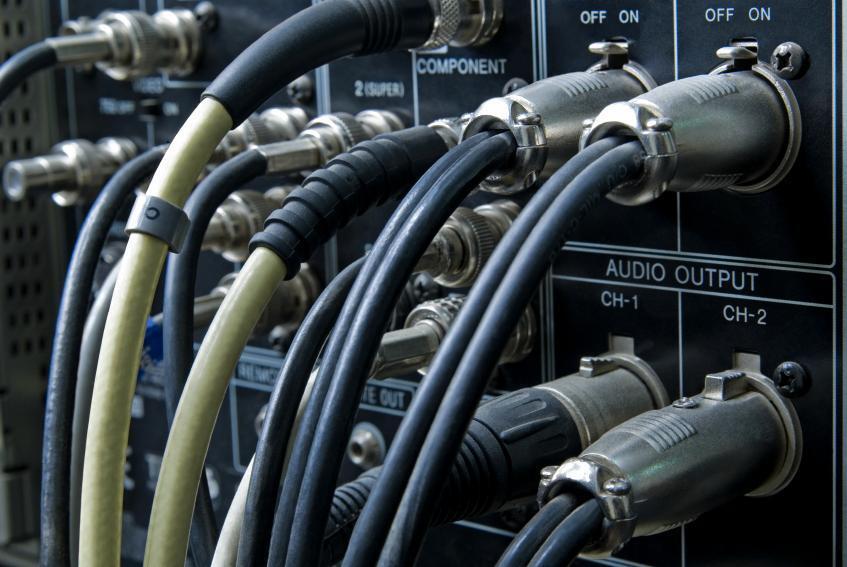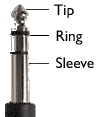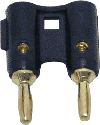How to Choose the Right Cable
Here at Sweetwater, we know that choosing the right cable for the right device can sometimes be tricky. Sweetwater’s Cable Buying Guide should demystify some of the confusion surrounding cables, how they work, and which ones connect to what. To maximize your sound quality and minimize noise, it is important to understand which cable is the appropriate choice for any given application. And if you are ever in doubt, Sweetwater’s Sales Engineers are cable experts and can help you make the right decision. Just call (800) 222-4700!
- Balanced vs. Unbalanced Cables
- Common Cable Connectors Explained
- Cable Shielding Explained
- Glossary of Additional Cable Connectors
- Where Do You Go from Here?
Balanced vs. Unbalanced Cables
A balanced electrical signal runs along three wires: a ground, a positive leg, and a negative leg. Both legs carry the same signal but in opposite polarity to each other. Any noise picked up along the cable run will typically be common to both legs. Assuming the destination is balanced, the receiving device will “flip” one signal and put the two signals back into polarity with each other. This causes the common noise to be out of phase with itself, thus being eliminated. This noise cancellation is called “Common Mode Rejection” and is the reason balanced lines are generally best for long cable runs. XLR and TRS cables are used to transmit balanced audio from one balanced device to another.
Unbalanced cables are less complicated, but they’re much more susceptible to noise problems. In general, unbalanced lines should be kept as short as possible (certainly under 25 feet) to minimize any potential noise that may be carried with the signal into the connected equipment.
Common Cable Connectors Explained
In the audio world, there are six common cable connectors you’ll come across frequently: TRS and XLR for balanced connections and TS, RCA, SpeakON, and banana plugs for unbalanced connections.
TRS
TRS is the abbreviation for “Tip, Ring, Sleeve.” It looks like a standard 1/4″ or 1/8″ plug but with an extra “ring” on its shaft. TRS cables have two conductors plus a ground (shield). They are commonly used to connect balanced equipment or for running both left and right mono signals to stereo headphones. You will also find TRS connectors on the stem of Y cables. These are used for mixer insert jacks where the signal is sent out through one wire and comes back in through the other.
XLR
XLR connectors are 3-pin connectors: positive, negative, and ground. They are usually used for transmitting microphone or balanced line-level signals. In audio, you will typically see XLR cables connecting microphones to mixers and connecting various outputs to powered speakers.
TS
TS is the abbreviation for “Tip, Sleeve” and refers to a specific type of 1/4″ or 1/8″ connector that is set up for 2-conductor, unbalanced operation. One insulator ring separates the tip and sleeve. The tip is generally considered the “hot,” or the carrier of the signal, while the sleeve is where the ground or shield is connected. TS cables are best known as guitar or line-level instrument cables.
RCA
RCA is the common name for phono connectors used to connect most consumer stereo equipment. Typically, you will see tape or CD inputs and outputs using RCA connectors. In the digital audio realm, RCA connectors are also used for S/PDIF connections, although true S/PDIF cables are more robust.
speakON
A speakON connector is used to connect power amplifiers to PA speakers and stage monitors. These are often preferred over 1/4″ TS connections because of their ability to lock into place. Since you should NEVER use an instrument cable to connect an amp to a speaker, they also help to avoid risky cabling mixups.
Banana Plug
A banana plug is an electrical connector that is designed to join audio wires, such as speaker wires, to the binding posts on the back of many power amplifiers or to special jacks called banana jacks. These jacks are commonly found at the ends of binding post receptacles on the back of power amps. The ends of the wires are held in place by a locking screw.
Cable Shielding Explained
Braided Shield
This is a cable shield that applies braided bunches of copper strands (called “picks”) around the insulated, electrostatically shielded center conductor. Its coverage can be varied from less than 50% to nearly 97% by changing the angle, the number of picks, and the rate at which they are applied. The braided cable maintains consistent coverage even if it is flexed or bent around corners.
Serve Shield
A serve shield, also known as a spiral-wrapped shield, is applied by wrapping a flat layer of copper strands around the center in a single direction (either clockwise or counter-clockwise). The serve shield is very flexible, providing very little restriction to the flexibility of the cable. Although its tensile strength is much less than that of a braid, the serve’s superior flexibility often makes it more desireable in real-world instrument applications.
Foil Shield
A foil shield is composed of a thin layer of Mylar-backed aluminum foil in contact with a copper drain wire used to terminate it. The foil shield/drain wire combination is very inexspensive, but it severely limits flexibility and breaks down under repeated flexing. Foil’s 100% coverage advantage is largely compromised by its high transfer impedance (aluminum being a poorer conductor of electricity than copper), especially at low frequencies.
Glossary of Additional Cable Connectors
1/8″ (Mini)
1/8″ diameter plug (or jack) used in smaller audio/visual interconnects. The connector may be TRS or TS. This is the size of most iPod-style headphone connectors.
AES
AES/EBU is the most common alternative to the S/PDIF standard and the most common AES/EBU physical interconnect is AES Type I Balanced — 3-conductor, 110-ohm twisted pair cabling with an XLR connector.
BNC
A type of coaxial connector often found on video and digital audio equipment. BNC connectors are normally used to carry synchronizing clock signals between devices. BNCs are bayonet-type connectors rather than screw on or straight plugs.
DB25
A type of D-Sub connector. DB25s are commonly found on computing equipment where they are employed to connect peripherals. TASCAM commonly uses the DB25 connector for analog and/or digital I/O on their products as do some other brands.
Elco (or Edac)
A brand and type of multi-pin connector used in audio systems and equipment for connecting multi-pair cables with one connector (instead of many). Both Elco and Edac come in 20-, 38-, 56-, 90-, and 120-pin configurations.
Insert/Y Cable
A cable used to split a signal into two parts or combine two signals into one. The term Y cable is used, because the cable is like (and looks like) the letter Y, with two parts joined into one, or one split into two, depending upon how you look at it. Y cables are common throughout audio as a simple and easy way to accomplish these two tasks.
Optical
Optical cables are for compatible 2-channel S/PDIF connections and Alesis ADAT lightpipe connections. The ADAT optical connections are for transferring digital audio, eight tracks at a time. They have become an industry standard and are used in a wide range of products from many manufacturers.
S/PDIF
A format for interfacing digital audio equipment together, S/PDIF (Sony/Philips Digital Interface Format) is considered a consumer format and is largely based on the AES/EBU standard. In fact, in many cases, the two are compatible. S/PDIF typically uses either unbalanced, high-impedance coaxial cables or fiber-optic cables for transmission.
FireWire (IEEE 1394)
First developed for video because of its high-speed data transfer, FireWire is now widely used for digital interfaces in the audio realm. FireWire is currently available as 4-pin and 6-pin (for FireWire 400), and 9-pin (for FireWire 800). The 6- and 9-pin versions can also supply power.
TDIF
TDIF is an acronym for TASCAM Digital InterFace. This is the protocol TASCAM developed to use in their modular digital multitrack and digital mixing products, for doing digital transfers of audio. TDIF connections are made via a 25-pin D-Sub connector and data is carried on shielded cable. The TDIF standard is currently one of two major formats (the other being ADAT optical) widely used in pro and semi-pro MDM-related products for digital transfer of more than two tracks of audio simultaneously using only one cable.
TT (Tiny Telephone)
A miniature version of what is known as a phone jack or phone plug. We commonly refer to this type of jack as a 1/4″ jack (our modern version actually is slightly different in size), which could come in TS and TRS forms. ADC built essentially the same type of connector but referred to it as a Bantam connector. Currently, the two names are interchangeable. TT/Bantam jacks are commonly used in recording studio patch bays.
Where Do You Go from Here?
Hopefully this guide has shed some light on what to look for when it comes to choosing cables. We’ve made cable shopping even easier with the Sweetwater Cable Finder. You can use it to locate exactly the cable that meets your needs in just 3 easy steps. And remember that your Sweetwater Sales Engineer is one of the most knowledgeable, highly trained people you’ll ever find. Call us at (800) 222-4700 for more information.

























